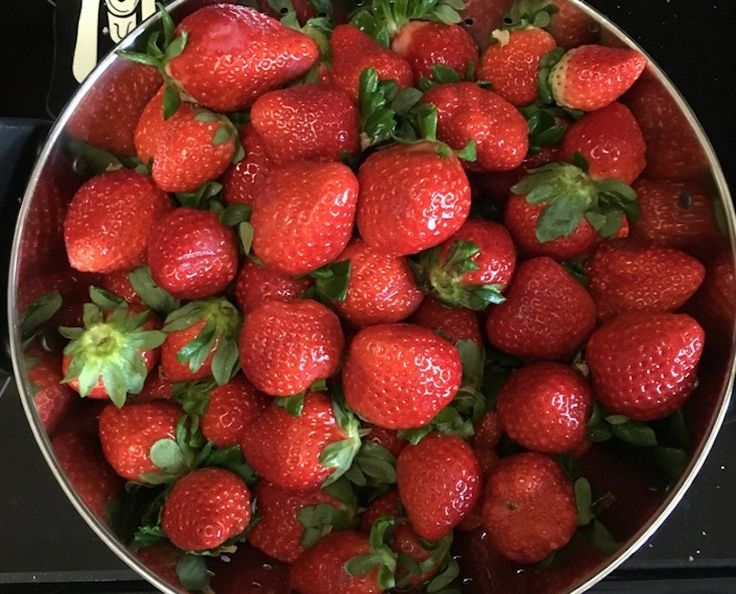
Are Strawberries Citrus Fruits? Unveiling the Botanical Truth
The question of whether strawberries are strawberries citrus fruits is a common one, often arising from their slightly tangy flavor. Many people associate a certain level of acidity with citrus fruits. However, the classification of fruits is rooted in botanical science, not just taste. Let’s delve into the details to understand where strawberries truly belong in the world of botany.
Understanding Citrus Fruits
Before we can determine if strawberries are citrus, it’s crucial to define what exactly constitutes a citrus fruit. Citrus fruits belong to the Rutaceae family and the Citrus genus. Common examples include oranges, lemons, grapefruits, and limes. These fruits share several key characteristics:
- Hesperidium Structure: Citrus fruits possess a unique structure called a hesperidium, which is a berry with a leathery rind and juicy segments inside.
- Evergreen Trees: Citrus plants are typically evergreen trees or shrubs.
- Native to Specific Regions: Most citrus fruits originated in Southeast Asia and have since spread globally.
- High Acidity: Citrus fruits are known for their high citric acid content, contributing to their tart or sour taste.
The Botanical Classification of Strawberries
Now, let’s examine strawberries. Strawberries belong to the Rosaceae family, which also includes roses, apples, and raspberries. The part of the strawberry we eat is not technically a fruit in the strictest botanical sense. It is an “accessory fruit.” In true fruits, the flesh develops from the ovary of the flower. In strawberries, the fleshy part develops from the receptacle of the flower, which holds the ovaries. The actual fruits are the tiny “seeds” on the surface, known as achenes.
Key characteristics of strawberries include:
- Accessory Fruit: As mentioned, strawberries are accessory fruits, developing from the receptacle rather than the ovary.
- Herbaceous Plant: Strawberry plants are herbaceous, meaning they have non-woody stems and typically die back to the ground each year.
- Multiple Achenes: The small, seed-like structures on the surface are individual fruits called achenes.
- Sweet-Tart Flavor: While they do have a slight tartness, strawberries are predominantly sweet.
Comparing Strawberries and Citrus Fruits
Comparing the characteristics of strawberries and citrus fruits, it becomes clear that strawberries are not citrus. They differ significantly in their botanical family, plant structure, fruit development, and geographical origin. The shared characteristic of a slightly acidic taste is superficial and not indicative of a close botanical relationship. [See also: Growing Strawberries in Your Garden]
Here’s a table summarizing the key differences:
| Characteristic | Citrus Fruits | Strawberries |
|---|---|---|
| Botanical Family | Rutaceae | Rosaceae |
| Plant Type | Evergreen Tree/Shrub | Herbaceous Plant |
| Fruit Structure | Hesperidium | Accessory Fruit (from receptacle) |
| Origin | Southeast Asia | Various regions worldwide |
The Role of Acidity
While strawberries are not citrus, their slightly tart flavor often leads to confusion. The acidity in strawberries comes from various organic acids, primarily citric acid and malic acid. The levels of these acids are significantly lower than those found in citrus fruits. This explains why strawberries are considered more sweet than sour. The perception of acidity can also be influenced by sugar content and other flavor compounds present in the fruit.
Why the Confusion?
The confusion about whether strawberries are citrus probably stems from the common culinary use of both types of fruits. Both strawberries and citrus fruits are frequently used in desserts, beverages, and other dishes, often adding a refreshing tang. However, culinary uses do not define botanical classifications. It’s important to remember that taste alone is not a reliable indicator of a fruit’s botanical family.
Culinary Uses and Nutritional Value
Despite not being citrus, strawberries are highly valued for their culinary versatility and nutritional benefits. They are rich in vitamin C, antioxidants, and fiber. They can be eaten fresh, used in jams, desserts, smoothies, and a wide range of other culinary applications. [See also: Health Benefits of Strawberries]
Citrus fruits, on the other hand, are also nutritional powerhouses, providing vitamin C, flavonoids, and various other beneficial compounds. They are commonly consumed as juice, eaten fresh, or used as ingredients in both sweet and savory dishes.
Other Fruits Mistaken for Citrus
Strawberries are not citrus, and they aren’t the only fruits that are sometimes mistakenly grouped with citrus fruits. Other fruits with a tart or tangy flavor, such as raspberries, cranberries, and pomegranates, are also occasionally confused with citrus. However, like strawberries, these fruits belong to different botanical families and have distinct characteristics.
Conclusion: Strawberries Are Not Citrus Fruits
In conclusion, the answer to the question “are strawberries citrus?” is a definitive no. Strawberries and citrus fruits belong to different botanical families, have different plant structures, and develop fruit in different ways. While both may share a slightly acidic taste, this is not enough to classify strawberries as citrus fruits. Understanding the botanical distinctions helps clarify these common misconceptions and allows for a deeper appreciation of the diversity within the world of fruits.
So, next time you enjoy a bowl of fresh strawberries, remember that they are not citrus, but a unique and delicious accessory fruit from the Rosaceae family. [See also: Strawberry Recipes for Summer]
Further Research and Learning
For those interested in learning more about fruit classification and botany, there are numerous resources available. University websites, botanical gardens, and reputable online sources can provide detailed information about plant families, fruit development, and the characteristics that define different types of fruits. Understanding these concepts can help clarify common misconceptions and deepen your appreciation for the natural world.
Ultimately, whether it’s the tangy zest of a lemon or the sweet-tart flavor of a strawberry, each fruit offers a unique sensory experience. By understanding their botanical classifications, we can appreciate their individual characteristics and the fascinating science behind them. Keep exploring, keep questioning, and keep enjoying the diverse world of fruits!
Remember, while strawberries are not citrus, they are certainly delicious and nutritious!
